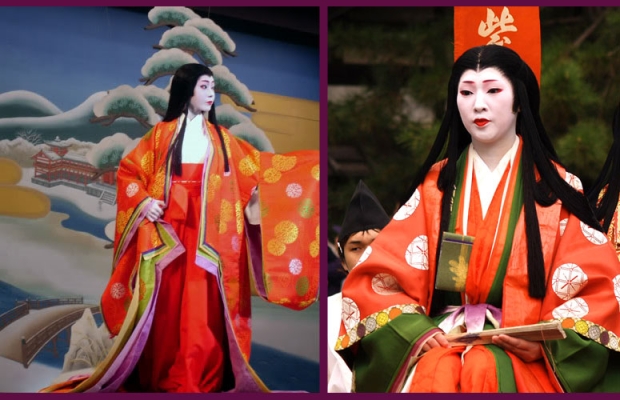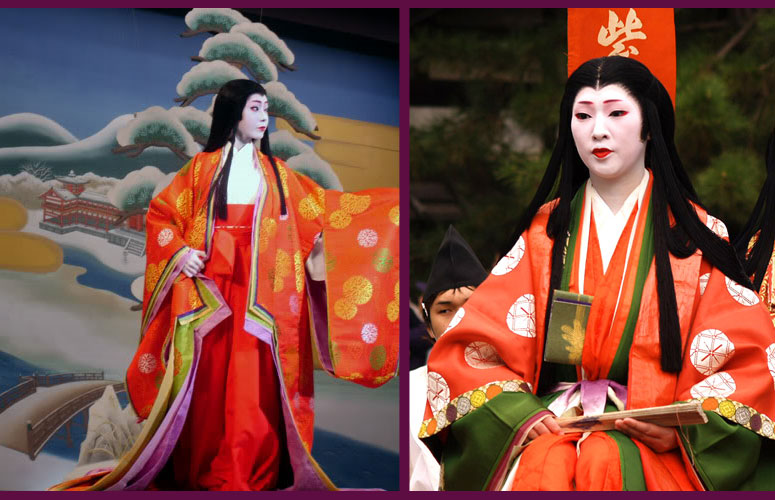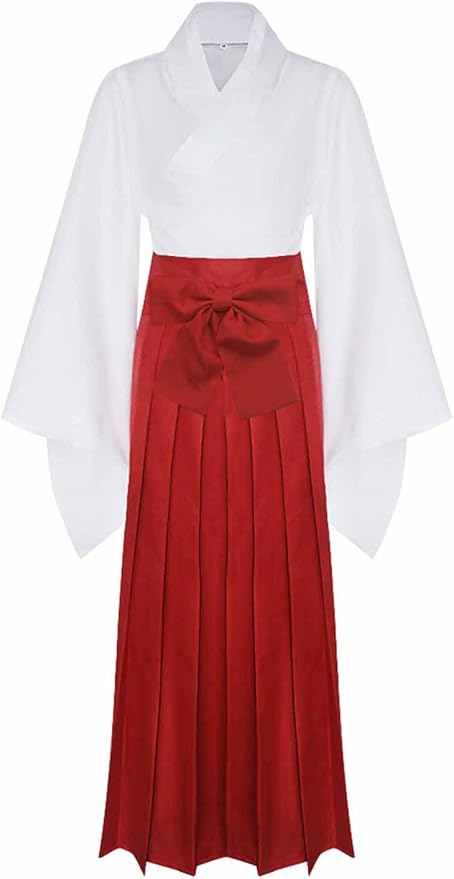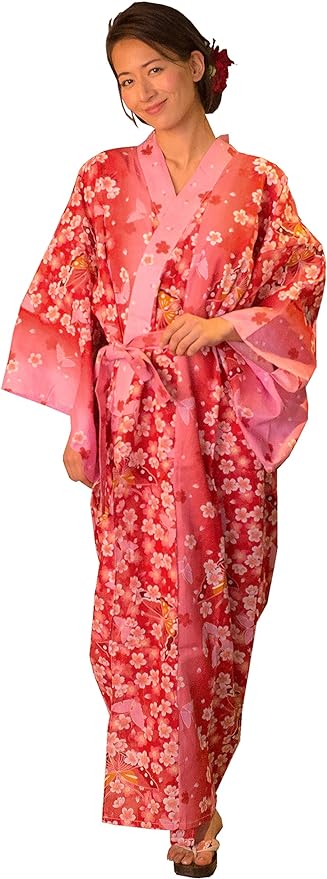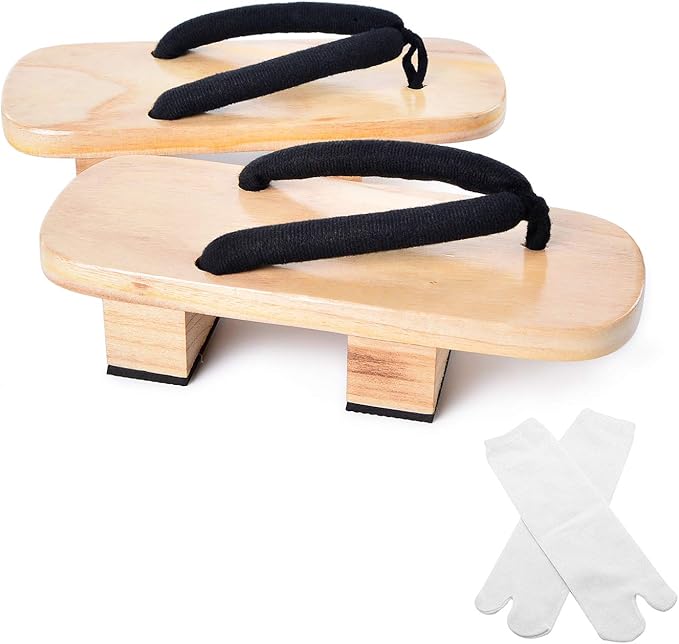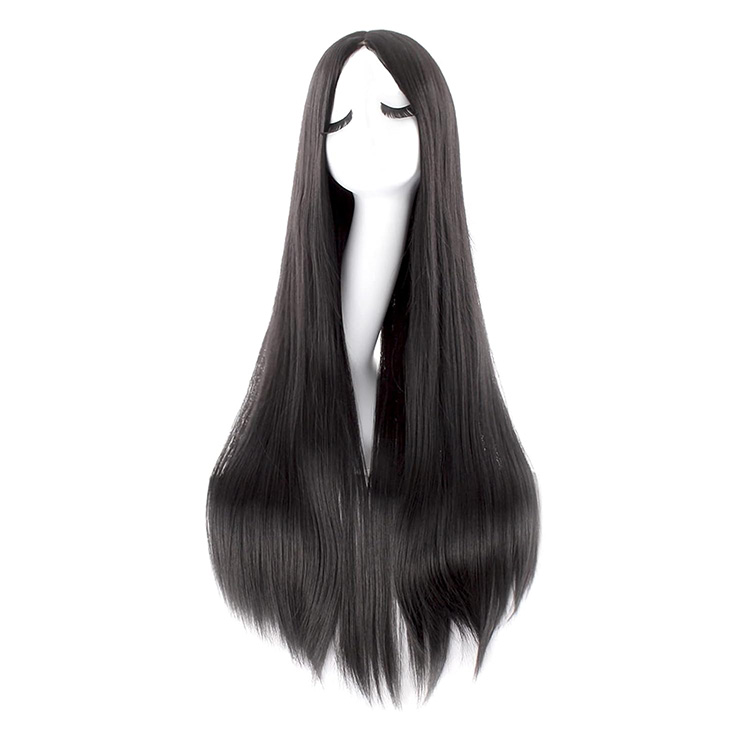Murasaki Shikibu (ca. 973-1014) was one of the world’s great literary geniuses. She wrote the first novel in history—The Tale of Genji—and with it created not only a timeless masterpiece of Japanese literature, but an entirely new art form. The photos above show performers garbed as Murasaki: the style is elaborate Heian period court dress, with multiple kimono-like robes layered on top of each other. Is there any possible way to approximate this without sewing? We’re going to try!
Reconstructing History offers two excellent patterns that illustrate the components involved. Reconstructing History Pattern 409 shows the white kosode (top) and red hakama (bottom trousers) that are the base layer:
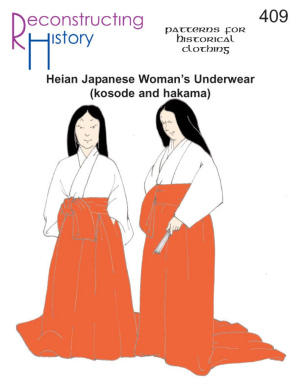
Reconstructing History Pattern 410 shows the long underrobe (hitoe), layered robes (uchigi), and overrobe (uwagi) that are worn for an informal or semi-formal look:
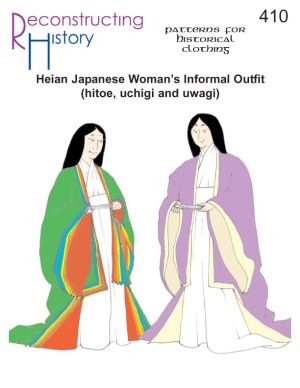
(There is also a third pattern, Reconstructing History Pattern 411, for the topmost jacket and ceremonial train that would elevate the ensemble to high formality, but we don’t need that.)
Our approach is to fake this out by layering a couple of yukatas in complementary patterns on top of a miko costume:
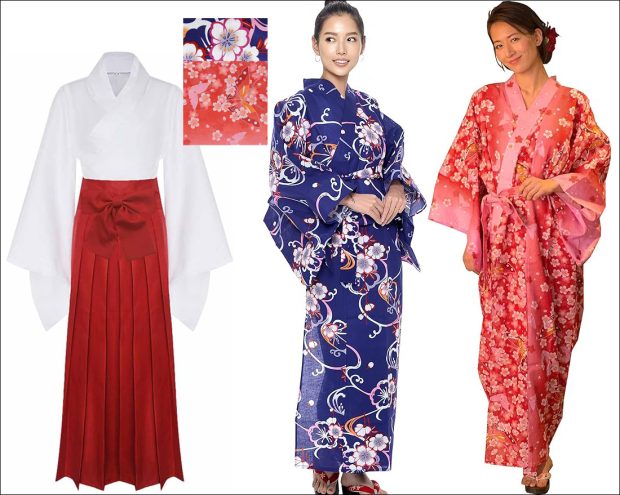
The pieces we suggest:
1. Miko costume. The miko (Shinto priestess) costume is very similar to the hakama and kosode that Heian ladies wore as their base layer. You can try a cosplay costume like this:
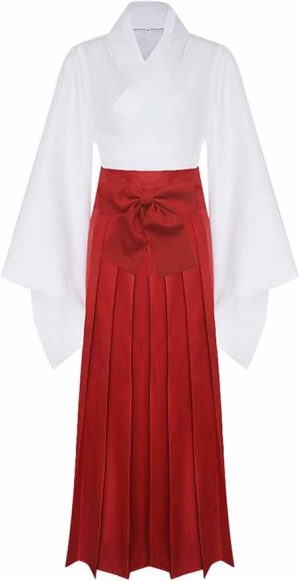
You can also look for a red hakama and white haori (jacket) at martial arts stores (look for kendo uniforms).
2. Contrasting yukata for the next layer.

3. Complementary yukata for the top layer.
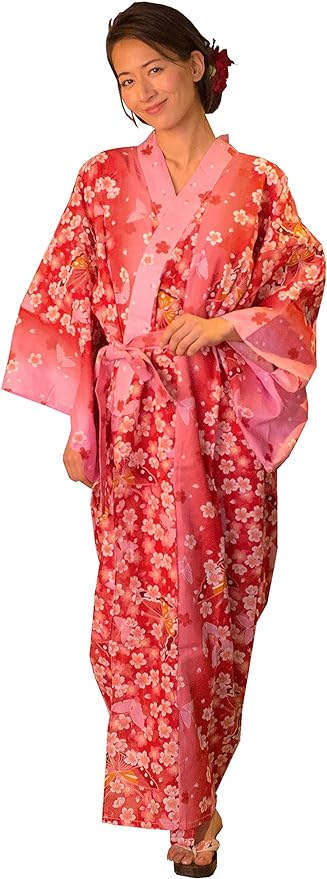
You’ll want to adjust all your layers carefully and probably secure them with safety pins so that each color shows.
4. Geta (wooden sandals) and tabi (split toe socks).
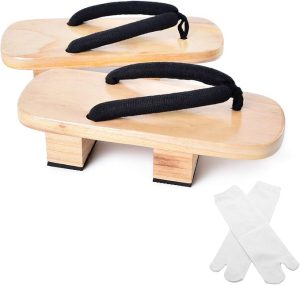
5. Long black wig (40 inches). Unless you already have super-long black hair.
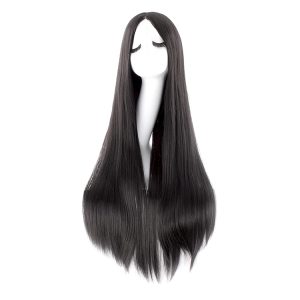
Makeup: Heian ladies wore white face makeup, painted false eyebrows high up on their foreheads, and dyed their teeth black. Pretty intense. Here’s a wonderful illustration by Nancy Duong showing how Heian beauty standards were a combination of Chinese influence and native aesthetics:
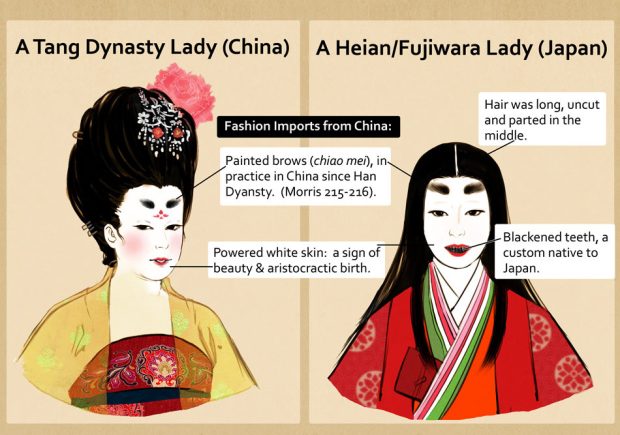
Sometimes there are video tutorials on YouTube or TikTok, so have a look.

